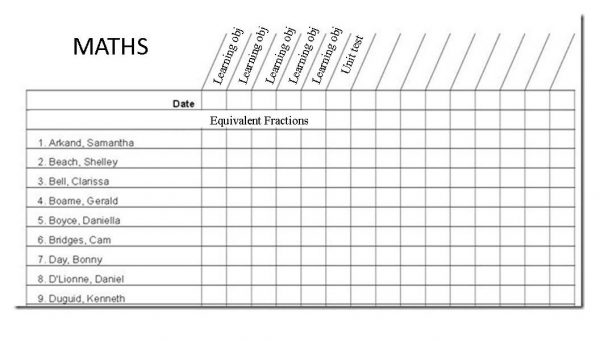In the current educational climate there is a very great danger of teachers disappearing under the demands of ever growing paperwork.
The introduction of what is an unrealistic and to a large extent irrelevant curriculum and the pressures from OFSTED on schools (no matter how they try to look friendly) have seen paperwork spiral totally out of control as schools scramble to become “accountable.”
However, in my opinion, it is the job of the Senior leadership team to exercise some control on these demands on staff and to sift through what is unnecessary and simply a time consuming hamster wheel.
In other words cut out the rubbish and just do what is necessary and useful!
So what are the requirements of teachers (educationally) in their simplest form:
- What are we teaching?
- How have the pupils achieved?
- What do we do about those children who are still unclear about things?
That seems to sum it up nicely – would you agree? (not to include all the other non curricular things we do!)

It seems to me that there is a trend at the moment for schools to keep adding to the workload of teachers in a vague attempt to mistakenly cover what is perceived as accountability – as such; workload keeps increasing and becomes more and more unmanageable.
But the old adage of WORK SMARTER is perhaps more relevant today than ever….instead of adding to the workload why don’t we use what we are already doing to greater effect?
Mark Books:
Mark books have been around for ever! Some of you reading this may still use a mark book but I have to say their general use is not strongly evident in classrooms. However to be honest a mark book can be your best friend in the classroom and can provide every bit of information that you need with regard to every child in your class – why? Because it is ONGOING AND CONTINUOUS ASSESSMENT about everything a child does….and what more information do you need?
In your classroom every piece of work and every task that you set for the children must be assessed – otherwise what is the point of that task?
If a task is not assessed then it is simply a time filler and worthless.
Now I am not going to go into the rationale of assessments and how they can be done in this article – suffice to say that teachers are doing this by a wide variety of methods every day and this informs everything you do and plan.
Setting up your mark book:
If you haven’t got one already then take a look online and decide what layout will suit your requirements – if you’re not too sure what you need then read on and see how I am recommending how to set things out.
Using a mark book takes very little extra work from what you are already doing so lets take a look at how its set out and how it functions.
Planning: – as you already know we plan in 3 stages
- Long term planning
- Medium term planning
- Short term planning or day to day planning
To set up a mark book we need to use both our medium term planning and our short term planning and it simply functions like this: –
- In our medium term planning we have identified which areas of maths (for example) we will be teaching this term.
- In order to teach each area (lets say equivalent fractions) we will be breaking it down into (for example) 6 lessons (the number of lessons we estimate we will need to cover the curricular item)
- Each of these lessons will have a learning objective (learning intention)
- Each lesson will generate some form of work to be assessed and marked

Take a look at an example setup above and note the following:
- Your mark book is divided into sections (a few pages) for each subject…in this way all maths will be together and all literacy will be together etc and this makes looking back much easier
- The learning objectives identified to cover a topic are listed at the top of the page
- The topic is identified (here equiv fractions)
- The place of the Unit test is shown at the end of the taught period
- Children’s names are down the side of the book (obviously!)
The Mark book in action (sounds very dramatic doesn’t it!)
The whole idea of the mark book is to record children’s progress and achievement.
So after you have marked a piece of work you need to grade that work – and to be honest a simple mark out of 10 makes things very easy. Why?….well it has a good spread across 0-10 and can also be scaled into a % easily when necessary. A mark out of 20 would be ok but for me not really necessary – but you may think differently.
As you mark the children’s work simply record the score in your mark book – when done, look back over the scores and colour lightly over any scores that are a fail – in red pencil crayon.
By this method we can see at a glance which pupils need extra attention and in which areas. The rest by default are ok.
By looking at the current Standards Agency scores and standardised scales they currently show.
KS1 – pass marks
- Maths – 60% (approx.) – 6/10
- English Reading – 55 – 60% (approx.) – 5.5 – 6/10
- English Grammar – 62-65% – 6 – 6.5/10
KS2 – pass marks
- Maths – 60% (approx.) – 6/10
- English Reading – 42% – 4/10 (suggest 5/10)
- English Grammar – 62% – 6/10

End of Unit tests:
I have come to the conclusion that in order to supplement our marking assessments it is necessary to have end of unit tests. These are focussed solely on the unit covered and can be done very quickly – reflecting all the taught elements of the unit. The test results are then simply noted (poss out of 20) in the mark book in the column following the unit marking scores. Failures are coloured red as before. I personally would not standardise the end of unit test scores but would keep a record of pass fail marks.
However, I would be standardising the end of term tests that combine units covered. ..(please refer to previous article on how to do this) ….link below
http://pp.distractweb.co.uk/2017/02/15/simple-pupil-tracking-system-new-primary-curriculum-2/
What our marks books tell us?
Our mark books now become the greatest source of information that we have.
- We can see immediately how every pupil is achieving both individually and across the class as a whole in each unit.
- It is possible to identify pupils who are failing and specifically which part of the unit they are failing on.
- We can set quick and accurate targets for each and every child if necessary and highlight areas for extra practice and consolidation
- We can standardise the test scores according to the Standards Agency.
Accountability:
The combination of the Mark book information and also the work in the children’s books does, in my opinion, satisfy all the requirements necessary for any accountability that may be required.
Identifying and addressing unit problems:
It is always a problem for teachers – having completed a test we may find that a high % of the class are having problems in one aspect of a unit or are unsure of certain facts. With curriculum time being tight there is often no time to address these areas and the class moves onto the next unit of work!
Perhaps 1 approach may be to factor in 1 week at the end of a unit and after the unit test where any problems can be addressed and dealt with specifically. By using a combination of the mark book results and the test score the areas to target can be identified easily. If however no time is needed then the class can confidently move onto the next unit of work.
So there you have it – in my opinion a vital inclusion to any teachers armoury. Once set up it is a very minimal additional effort to keep up to date and the information it provides allows you, as a teacher, to both structure and report on every aspect of your taught curriculum.
In my school it would form the foundation of all our assessments – used properly, it has the potential to reduce excessive workload whilst at the same time providing a level of detail that many other systems cannot match.
Senior leadership teams….food for thought?



Pingback: Is it your school that's causing workload problems? (2) - Primary Practice